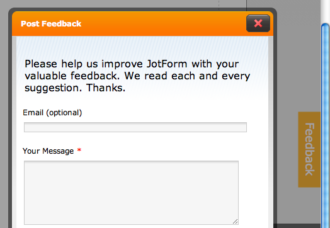Unlike giving positive feedback, delivering critical feedback is stressful. After all, who wants to confront someone else about the shortcomings in their work or actions?
Nonetheless, sharing critical feedback is necessary when the person is unaware of an issue you’ve noticed. Giving critical feedback may never be something you look forward to, but following the advice below will help soften the blow for the recipient and make the process easier for you.
Insights on delivering critical feedback effectively
The most important aspect of giving critical feedback, according to consultant and career coach Irina Cozma, is to clearly structure what you’re going to say. She recommends delivering the feedback in this manner:
- Describe the context or situation.
- Describe the actions the recipient took.
- Describe the results of those actions.
- Suggest better actions they could have taken.
- Describe the likely or desired results from your suggested actions.
Cozma provides examples of this structure for giving critical feedback to a subordinate, a peer, and a manager. Note how the structure is the same, but the context and delivery are adjusted based on the relationship between the parties.
To a subordinate:
I know you had to finish three tasks for the integration project by the end of last week. I understand that you asked other departments for input, but they didn’t respond on time and that resulted in you completing only one of the tasks. Because the other two tasks weren’t completed, the other team members couldn’t move ahead with their work, and the entire project is now delayed. Another way to approach this would have been to escalate the lack of response from the other departments to me so I could have intervened. That would have helped us keep the project on schedule. Please let me know when and how I can support you in the future.
To a peer:
The conference last week was a lot of fun! I made sure to attend your presentation because I’m very interested in your work. I noticed that you had a lot of useful information to cover in a short amount of time. A few of your slides were kind of wordy, and you had to rush to cover them. I think you lost the audience during those times. My suggestion for the future is to do a dry run of the presentation, which I’m happy to help with. That will give you the opportunity to trim down the slides/words, and will also help with the timing of the presentation. If you do that, I’m sure the audience will benefit from your expertise even more.
To a manager:
Regarding the team meeting we had yesterday, I had some thoughts about the workforce task I’m leading. You mentioned during the meeting that you’re disappointed we’re behind schedule and volunteered to take the lead for several tasks. That made me feel dismissed and undervalued. It would’ve been helpful if you’d asked more questions to understand the complexities of the work we’re doing and where the bottleneck is. That would have helped me move forward. I was looking for more support, not to relinquish ownership. I will look for time in your calendar to talk about next steps.
Sean Hayes, head of technology at Hausera, adds that critical feedback carries more weight when you balance it with praise. Your first reaction as a manager may be to call out something that’s wrong, but focusing only on the negative will make the employee feel unvalued. “Highlight areas where they did something right, too,” says Hayes.
It’s very stressful for employees to deliver critical feedback to managers because “the repercussions feel much more daunting when the roles are reversed,” Hayes says. He recommends employees deliver their critique in a professional manner that demonstrates careful forethought and concern for improving overall team performance.
“A strong leader will be receptive to feedback because they know it will only improve their management skills and positively impact employee performance,” Hayes says.












































































Send Comment: